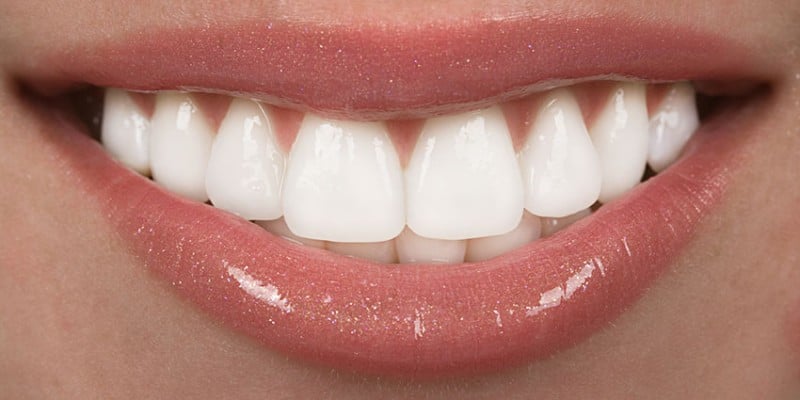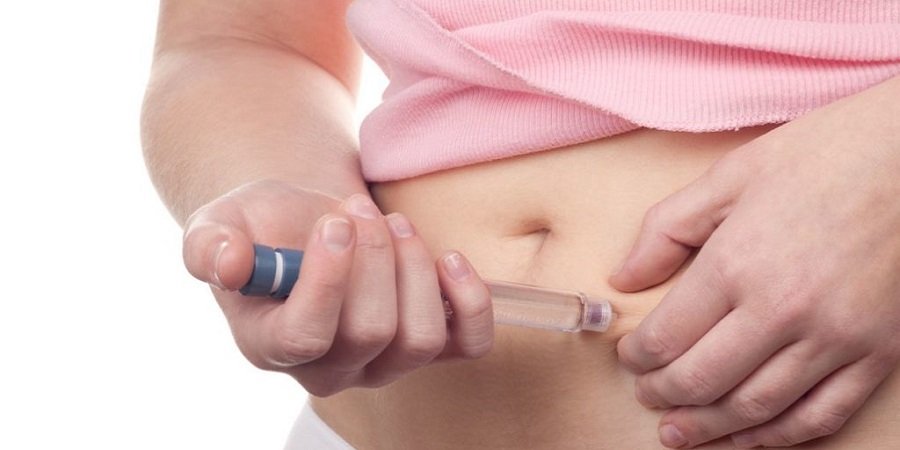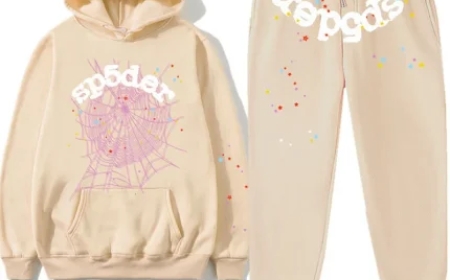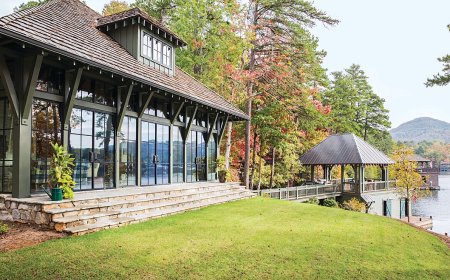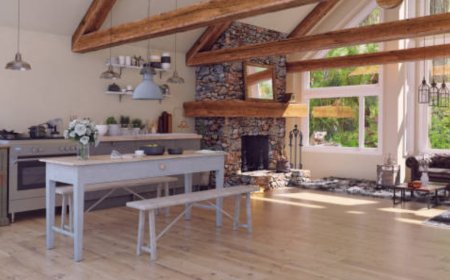How to Taste Limoux Blanquette Sparkling
How to Taste Limoux Blanquette Sparkling Limoux Blanquette Sparkling is one of the oldest sparkling wines in the world, with a heritage dating back to at least 1531—predating Champagne by nearly 150 years. Produced in the Languedoc region of southern France, near the Pyrenees mountains, Blanquette de Limoux is crafted primarily from the Mauzac grape, often blended with Chardonnay and Chenin Blanc.
How to Taste Limoux Blanquette Sparkling
Limoux Blanquette Sparkling is one of the oldest sparkling wines in the world, with a heritage dating back to at least 1531—predating Champagne by nearly 150 years. Produced in the Languedoc region of southern France, near the Pyrenees mountains, Blanquette de Limoux is crafted primarily from the Mauzac grape, often blended with Chardonnay and Chenin Blanc. Its unique terroir, traditional méthode ancestrale production, and delicate effervescence make it a standout in the world of sparkling wines. Yet, despite its historical significance and exceptional quality, Blanquette remains underappreciated by many wine enthusiasts who equate sparkling wine solely with Champagne or Prosecco.
Tasting Limoux Blanquette Sparkling is not merely about drinking—it’s an immersive sensory journey that reveals the nuances of ancient winemaking, regional identity, and the subtle art of balance between acidity, fruit, and yeast. Whether you’re a seasoned sommelier, a curious novice, or someone seeking to expand your palate beyond mainstream bubbles, learning how to properly taste Blanquette de Limoux opens the door to a deeper appreciation of wine culture and tradition.
This guide provides a comprehensive, step-by-step approach to tasting Limoux Blanquette Sparkling, combining technical insight with sensory awareness. You’ll learn how to select the right bottle, prepare your environment, engage all five senses, interpret aromas and flavors, and pair the wine with food to elevate the experience. By the end of this tutorial, you’ll not only know how to taste Blanquette—you’ll understand why it deserves a place on your table alongside the world’s finest sparkling wines.
Step-by-Step Guide
Step 1: Select the Right Bottle
Not all Blanquettes are created equal. Begin by identifying the specific designation on the label. There are two main categories of Limoux sparkling wine: Blanquette de Limoux and Crémant de Limoux. Blanquette de Limoux must contain at least 90% Mauzac, with the remainder typically Chardonnay or Chenin Blanc. Crémant de Limoux, on the other hand, uses a higher proportion of Chardonnay and Chenin Blanc and is made using the traditional method (méthode traditionnelle), similar to Champagne. For authentic Blanquette, look for “Blanquette de Limoux” and the phrase “méthode ancestrale” on the bottle.
Check the vintage. While many Blanquettes are non-vintage (NV), some producers release vintage-dated bottles that offer greater complexity and aging potential. Vintage Blanquettes often exhibit more pronounced nutty, honeyed, or toasted notes. Avoid bottles with visible sediment around the neck or cloudiness in the liquid—this may indicate poor storage or premature oxidation.
Consider the producer. Renowned estates like Domaine de l’Arlot, Domaine de la Rectorie, and Domaine de l’Aubertin have decades of experience and consistently deliver expressive, balanced wines. Smaller, family-run vineyards often produce limited quantities with exceptional character. Research producers known for organic or biodynamic practices, as these tend to reflect the true expression of the Limoux terroir.
Step 2: Store and Chill Properly
Temperature is critical when serving Blanquette de Limoux. Unlike Champagne, which is often served at 8–10°C (46–50°F), Blanquette benefits from being served slightly cooler—at 6–8°C (43–46°F). This preserves its crisp acidity and delicate floral aromas without dulling the fruit expression.
Store the bottle horizontally in a cool, dark place with consistent temperature, ideally in a wine fridge or cellar. Avoid areas with fluctuating temperatures or direct sunlight, as these can degrade the wine’s structure and accelerate oxidation. If you’re storing it for an extended period, ensure humidity levels remain between 60–70% to prevent cork drying.
Chill the bottle for at least 3–4 hours in the refrigerator, or 30 minutes in an ice-water bath (with salt added for faster cooling). Never use the freezer—it can shock the wine and flatten its aromatics. Once chilled, keep the bottle upright until ready to open to avoid disturbing any fine lees sediment.
Step 3: Choose the Right Glassware
While a flute is traditional for sparkling wines, it is not ideal for Blanquette de Limoux. The narrow shape of a flute restricts the release of aromas, which are essential to appreciating Mauzac’s unique profile—notes of green apple, quince, pear, and subtle earthiness.
Instead, opt for a standard white wine glass or a tulip-shaped glass. These have a wider bowl that allows the wine to breathe and concentrate aromas near the rim. The tapered top helps capture the delicate bouquet while still permitting enough surface area for the bubbles to rise gracefully.
Avoid oversized wine glasses or tumblers—they disperse the effervescence too quickly and dilute the sensory experience. If you’re tasting multiple wines side by side, use identical glasses to ensure consistency in evaluation.
Step 4: Open the Bottle Correctly
Opening a sparkling wine requires care and precision. Never shake the bottle. If the wine has been stored horizontally, gently rotate it to release any sediment before standing it upright for 15 minutes.
Remove the foil and wire cage slowly. Keep your thumb firmly on the cork throughout the process. Hold the bottle at a 45-degree angle away from yourself and others. Grasp the cork with one hand and the base of the bottle with the other. Twist the bottle—not the cork—gently and steadily. You should hear a soft sigh, not a pop.
A loud pop can disturb the wine’s delicate bubbles and release volatile aromas too abruptly, diminishing the sensory experience. The goal is to preserve the mousse—the fine, persistent foam that defines quality sparkling wine. A controlled release ensures the wine retains its texture and aromatic integrity.
Step 5: Observe the Appearance
Hold the glass against a white background under natural or soft lighting. Tilt the glass slightly and observe the color. Blanquette de Limoux typically presents a pale straw hue with greenish or silver reflections, indicating youth and freshness. Older vintages may show deeper gold tones, suggesting oxidative development and complexity.
Watch the bubbles. Blanquette made via méthode ancestrale produces finer, slower-rising bubbles compared to the more aggressive mousse of Champagne. The bubbles should be persistent, forming a steady stream from the base of the glass. A weak or short-lived effervescence may indicate poor production or aging issues.
Look for clarity. The wine should be brilliant and clear, with no haze or floating particles (unless it’s an unfiltered, artisanal cuvée intentionally left with lees). A small amount of fine sediment at the bottom is acceptable in traditional méthode ancestrale wines and does not indicate spoilage—it’s a sign of minimal intervention.
Step 6: Swirl and Sniff
Gently swirl the wine in the glass to release its aromas. Avoid vigorous swirling, as this can over-aerate the delicate bubbles and mute the subtle notes. After swirling, bring the glass to your nose and inhale slowly through both nostrils.
Blanquette de Limoux offers a distinctive aromatic profile. Primary aromas include green apple, pear, quince, white peach, and fresh herbs. Secondary aromas—developed during fermentation—may include brioche, toasted almond, wet stone, and a hint of honey. Tertiary notes, if present in aged bottles, can reveal dried apricot, beeswax, or even mushroom-like earthiness.
Pay attention to the intensity and complexity. A low-intensity nose may suggest underripe grapes or poor winemaking. A complex, layered bouquet signals careful vineyard management and extended lees contact. Note any off-odors: vinegar, wet cardboard, or rotten eggs indicate spoilage and should be avoided.
Step 7: Sip and Evaluate
Take a small sip—about 10–15 milliliters. Let the wine coat your entire mouth. Do not swallow immediately. Allow it to linger for 5–10 seconds. Notice the texture: is it light and crisp, or rich and creamy? Blanquette’s texture is often described as silky or chalky due to its fine bubbles and low dosage.
Identify the primary flavors: tart green apple, citrus zest, pear skin, and a touch of almond bitterness. The acidity should be bright but balanced—not sharp or sour. Mauzac’s natural high acidity is softened by the wine’s slight residual sugar (typically 10–15 g/L), creating a harmonious tension between sweetness and tartness.
Assess the finish. A quality Blanquette will have a medium to long finish, with lingering notes of orchard fruit and mineral undertones. The effervescence should feel integrated, not aggressive. If the wine feels flat, overly sweet, or lacks structure, it may be poorly made or past its prime.
Step 8: Reassess and Reflect
After swallowing or spitting, breathe out gently through your nose. This retro-nasal passage often reveals additional aromas not detected during the initial sniff. Does the wine evolve? Does it become more floral, mineral, or nutty?
Compare your experience with the wine’s label and producer notes. Did the tasting confirm the described characteristics? Did you detect nuances the producer didn’t mention? This reflective step builds your sensory memory and deepens your understanding of terroir and winemaking style.
Step 9: Pair and Enjoy
Blanquette de Limoux is incredibly food-friendly. Its bright acidity and subtle sweetness make it ideal for pairing with delicate appetizers, seafood, and vegetarian dishes. Try it with goat cheese salad, grilled shrimp with lemon herb dressing, or a plate of fresh oysters. Its low alcohol (typically 10–11% ABV) and gentle bubbles also make it a refreshing aperitif or companion to spicy Asian cuisine.
For a traditional Limoux experience, serve it with local specialties like cassoulet (a slow-cooked bean stew) or roasted quail with figs. The wine’s earthy undertones complement rustic flavors beautifully.
Don’t limit yourself to savory pairings. Blanquette also pairs surprisingly well with fruit tarts, almond cakes, or even dark chocolate with sea salt—its acidity cuts through richness while its fruitiness enhances sweetness.
Best Practices
1. Taste in a Neutral Environment
Avoid tasting Blanquette in rooms with strong odors—candles, cleaning products, perfumes, or cooking fumes can interfere with your ability to detect subtle aromas. Choose a quiet, well-lit space with minimal distractions. If possible, taste in the late morning or early afternoon when your senses are most alert.
2. Use a Tasting Journal
Record your observations for each bottle you taste. Note the producer, vintage, appearance, aroma, flavor profile, texture, finish, and food pairings. Over time, this journal becomes a personal reference guide, helping you identify your preferences and recognize patterns across producers and vintages.
3. Taste Blind When Possible
Blind tasting eliminates bias based on price, reputation, or label design. It forces you to rely solely on your senses. Try tasting three different Blanquettes side by side without knowing their identities. Which one has the most complexity? The most persistent bubbles? The most intriguing finish? This exercise sharpens your palate and builds confidence.
4. Avoid Overchilling
While chilling is essential, excessive cold numbs the palate and suppresses aromatics. If the wine feels too cold, let it sit at room temperature for 5–10 minutes before tasting. You’ll notice a dramatic improvement in flavor expression.
5. Don’t Rush
Blanquette de Limoux rewards patience. Allow at least 15–20 minutes from opening to final sip. The wine opens up gradually, revealing new layers as it warms slightly in the glass. Rushing the process denies you the full experience.
6. Taste with Clean Palate
Avoid strong coffee, mint, or spicy foods before tasting. Brushing your teeth with mint toothpaste immediately before tasting can mute your senses. Rinse your mouth with water and wait 10 minutes if you’ve eaten something flavorful.
7. Re-Cork and Store Opened Bottles Properly
Blanquette de Limoux retains its bubbles longer than many other sparkling wines due to its méthode ancestrale. Use a sparkling wine stopper and refrigerate the opened bottle. It will remain fresh for 2–3 days, sometimes longer, especially if stored upright. The bubbles may soften slightly, but the flavor profile remains intact.
8. Educate Yourself on Terroir
The Limoux region is defined by its limestone-rich soils, cool mountain breezes, and warm Mediterranean influence. These conditions allow Mauzac to ripen slowly, preserving acidity while developing complex flavors. Understanding the geography helps you appreciate why Blanquette tastes the way it does—and why it can’t be replicated elsewhere.
Tools and Resources
Recommended Books
- The World Atlas of Wine by Hugh Johnson and Jancis Robinson – Provides detailed maps and historical context for Limoux and other sparkling wine regions.
- Wine Folly: The Essential Guide to Wine by Madeline Puckette and Justin Hammack – Offers accessible visual guides to grape varieties, including Mauzac.
- Christie’s World Encyclopedia of Champagne & Sparkling Wine by Tom Stevenson – Covers the history and techniques of méthode ancestrale and méthode traditionnelle.
Online Resources
- Wine-Searcher.com – Search for specific Blanquette producers, read reviews, and locate retailers near you.
- Decanter.com – Features expert tasting notes and annual reviews of Limoux wines.
- Wine Spectator’s Education Section – Offers free articles on sparkling wine production methods and tasting techniques.
- YouTube Channels: “Wine With David” and “The Wine Teacher” – Visual tutorials on how to taste sparkling wines, including Blanquette.
Mobile Apps
- Vivino – Scan labels to read community ratings and tasting notes for specific Blanquette bottles.
- CellarTracker – Log your tasting experiences and compare them with thousands of other users’ notes.
- Wine Folly App – Interactive guides to grape varieties, flavor profiles, and food pairings.
Wine Tasting Kits
Consider investing in a sensory training kit designed for sparkling wines. These often include aroma wheels with scents like green apple, yeast, toast, and minerality—helping you train your nose to identify subtle notes. Kits from companies like Le Nez du Vin or Wine Aroma Kit are widely used by professionals and enthusiasts alike.
Local Tastings and Tours
If you’re able to travel, visit Limoux itself. Many domaines offer guided tastings and vineyard tours. Experience the wine in its birthplace—standing among the vineyards, breathing the mountain air, and tasting the wine straight from the barrel. This immersive context transforms tasting from a technical exercise into a cultural pilgrimage.
Real Examples
Example 1: Domaine de l’Arlot Blanquette de Limoux 2021
Produced using 100% Mauzac and aged on lees for 18 months, this wine opens with pronounced aromas of green apple, white flowers, and wet limestone. On the palate, it’s crisp and medium-bodied, with a creamy mousse and flavors of quince, lemon zest, and a hint of almond skin. The finish is clean and mineral-driven, lasting 25 seconds. Paired with a goat cheese and pear tart, the wine’s acidity cut through the richness while enhancing the fruit’s sweetness. A textbook example of modern Blanquette with excellent balance.
Example 2: Domaine de la Rectorie Blanquette de Limoux Méthode Ancestrale NV
This organic cuvée features a slightly cloudy appearance and a more rustic character. Aromas of dried pear, hay, and beeswax dominate, with a touch of earthiness. The bubbles are fine but less persistent, reflecting minimal intervention. The flavor profile is more savory than fruity, with notes of toasted bread, green tea, and wet stone. A surprising pairing with smoked trout on rye bread revealed how well its earthy notes complement cured meats. This bottle exemplifies artisanal, low-dosage Blanquette that appeals to natural wine lovers.
Example 3: Domaine de l’Aubertin Blanquette de Limoux 2018 (Vintage)
With three years of bottle aging, this wine shows tertiary development. The color is deeper gold, with slow-rising bubbles. Aromas of baked apple, honeycomb, and dried apricot emerge, alongside subtle notes of mushroom and toasted hazelnut. The texture is richer and rounder, with a longer, more complex finish. Served with roasted duck breast and fig compote, the wine’s depth mirrored the dish’s richness, creating a harmonious, elevated pairing. This bottle demonstrates Blanquette’s aging potential—often underestimated by consumers.
Example 4: A Poor Example – Generic Supermarket Blanquette
A budget bottle labeled “Blanquette Sparkling” from a mass-market retailer had a pale, watery appearance with large, quickly dissipating bubbles. The nose was dominated by artificial pear flavor and a faint metallic note. On the palate, it was overly sweet, with no acidity or structure, and a short, sugary finish. No discernible terroir or complexity. This example highlights the importance of selecting quality producers—cheap Blanquettes often use inferior grapes and industrial methods, missing the soul of the wine entirely.
FAQs
Is Blanquette de Limoux the same as Champagne?
No. Blanquette de Limoux is made primarily from Mauzac, while Champagne uses Chardonnay, Pinot Noir, and Pinot Meunier. Blanquette is often made using the méthode ancestrale (natural fermentation in bottle without disgorgement), whereas Champagne uses the méthode traditionnelle (with disgorgement and dosage). Blanquette is typically lighter, fruitier, and less yeasty than Champagne.
What does “méthode ancestrale” mean?
Méthode ancestrale is the original method of making sparkling wine, dating back to the 16th century. Fermentation begins in tank and finishes in bottle, trapping carbon dioxide naturally. No additional sugar or yeast is added after bottling (no liqueur de tirage), and the wine is not disgorged. This results in a slightly cloudy wine with residual yeast and lower pressure than Champagne.
Is Blanquette de Limoux sweet or dry?
Most Blanquettes are off-dry, with residual sugar levels between 10–15 grams per liter. This balances the grape’s natural high acidity. Some producers make brut versions (under 12 g/L) or demi-sec (18–25 g/L). Always check the label for dosage information.
Can Blanquette be aged?
Yes. While many are meant for early consumption, vintage Blanquettes made with high-quality Mauzac and extended lees contact can age for 5–10 years. Aging develops honeyed, nutty, and earthy notes, similar to aged Chardonnay. Store bottles horizontally in a cool, dark place.
Why is Blanquette less well-known than Prosecco or Cava?
Historically, Champagne dominated global marketing. Blanquette was produced in a small, remote region with limited export infrastructure. Many producers focused on domestic sales. However, in recent decades, increased interest in natural wines and heritage grapes has led to a resurgence in Blanquette’s popularity among sommeliers and wine enthusiasts.
Is Blanquette de Limoux vegan?
Many traditional producers use animal-derived fining agents like egg whites or casein. However, an increasing number of organic and biodynamic estates now use bentonite or other vegan-friendly clarifiers. Look for labels stating “vegan” or contact the producer directly.
How much should I expect to pay for a good Blanquette?
Quality Blanquette de Limoux typically ranges from $15–$35 USD. Premium or vintage bottles may reach $40–$60. Avoid bottles under $10—they’re often mass-produced and lack character.
Can I use Blanquette in cocktails?
Yes, but sparingly. Its delicate profile is best enjoyed on its own. For cocktails, use it in place of Prosecco in a spritz or a simple fruit spritzer. Avoid heavy mixers that mask its subtlety.
Where can I buy authentic Blanquette de Limoux?
Specialty wine shops, French importers, and online retailers like Wine.com, Total Wine, or local French wine merchants carry authentic bottles. Avoid large grocery chains unless they have a curated selection. Look for the AOC “Blanquette de Limoux” designation on the label.
Conclusion
Tasting Limoux Blanquette Sparkling is more than a technical exercise—it’s a celebration of history, terroir, and the quiet artistry of traditional winemaking. In a world saturated with mass-produced bubbles, Blanquette stands as a testament to patience, precision, and place. Its unique character, born from the Mauzac grape and the cool, limestone-rich hills of Limoux, offers a sparkling wine experience unlike any other.
By following the steps outlined in this guide—from proper selection and chilling to sensory evaluation and thoughtful pairing—you unlock the full potential of this ancient wine. You learn not just how to taste, but how to listen—to the whisper of bubbles, the sigh of fruit, the echo of earth. Each sip becomes a connection to centuries of French viticulture, to vineyard workers who have tended these vines since before the age of mechanization.
As you continue your journey, let curiosity guide you. Taste blind. Visit the region. Compare vintages. Share bottles with friends. Let Blanquette de Limoux become more than a wine on your shelf—it becomes a story you carry with you, one glass at a time.
Whether served at a summer picnic, a quiet evening dinner, or a special celebration, Blanquette de Limoux deserves a seat at the table—not as a substitute for Champagne, but as its own noble, enduring expression of sparkling wine. Taste it well. Taste it often. And never take its quiet brilliance for granted.







